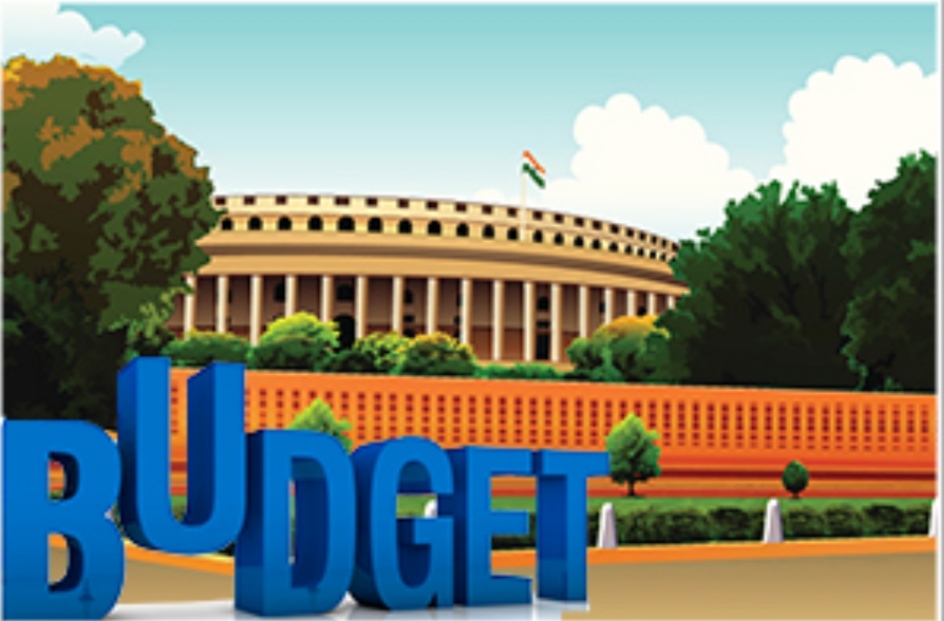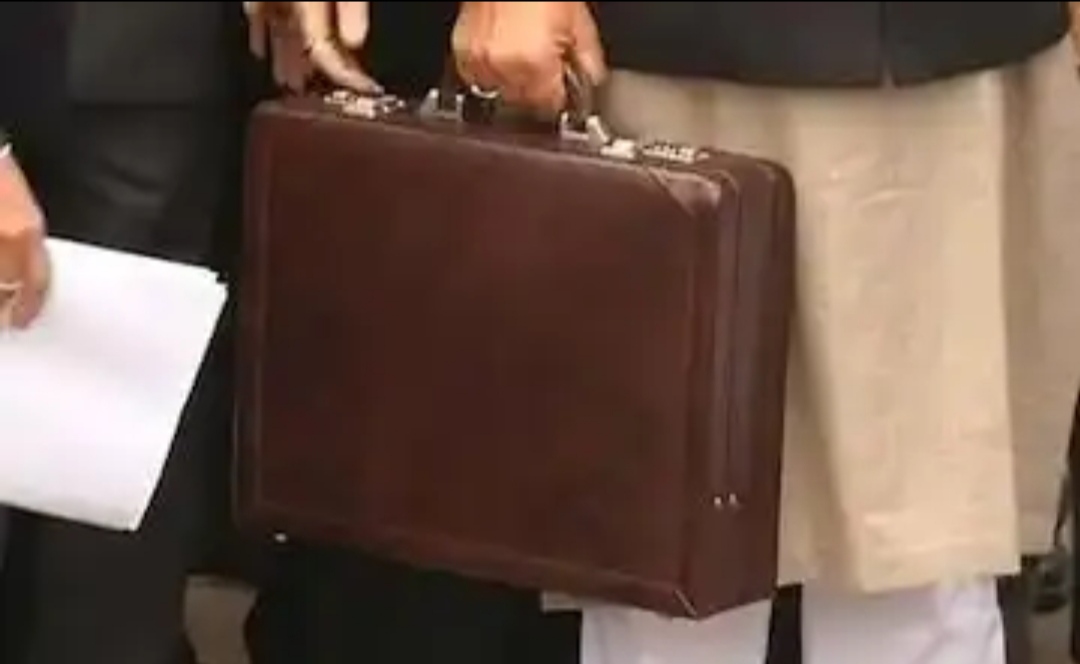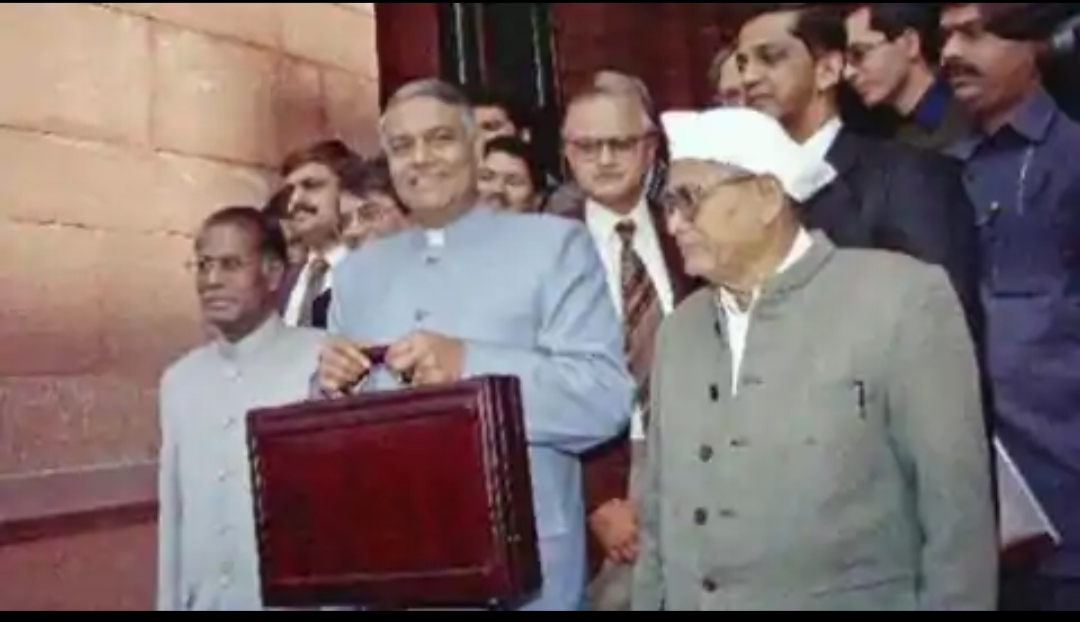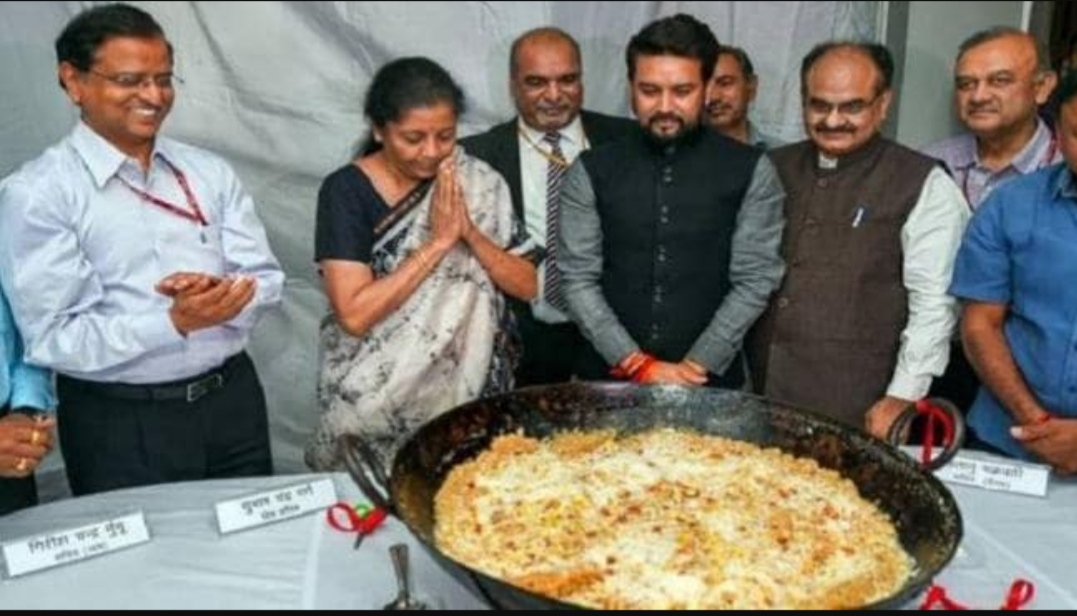
We all must have heard the name of the budget a lot and in common life also we use this many times. It is very important to build a budget to meet the money for the development of the economy. Money is met in the development plans only by the budget, and the development of these schemes leads to the development of the common man. In this article, I will give you information about many important facts- what is the budget, how many types of budget are there, the importance of budget, the origin of the word budget, the start of budget in India, etc. So let's know about the budget.
"In general terms, if the budget is defined, the budget is a plan which is made by making a balanced estimate of the income and expenditure of the country."
An ideal budget is a budget in which no one has a personal interest and who is beneficial to all, irrespective of any class of people. Generally speaking, a normal person also prepares a budget, he spends his money on the basis of his monthly income. For example, if Ramesh has a monthly salary of Rs 10,000 and prepares a budget for how he will spend his money so much on which item, he will try that his total expenditure is less than 10000 rupees so that he can also save. So he will spend according to his income. Thus, the common man can balance his expenditure.
In contrast, the government budget differs somewhat from this. The budget prepared by the government is a deficit budget. Because India is a developing country, so the income received by the government is less than the expenditure. Government Spends the money of budget on public interest works. The government finances the deficit from the accumulated funds or by taking loans and the government receives this loan from the Reserve Bank. This spreads the money in the market. The budget of the deficit is also made for the situation of recession and economic development. And this type of budget is a suitable medicine to get India out of the situation of recession. From the budget, The public gets to know about the public interest policies of the government, how much the government is spending on which item. The budget also describes the tax that the government imposes. A good budget plays an important role in getting the country out of the financial crisis and also paves the way for the country's progress.

If we talk about the origin of the word budget, then it has a short history. The word budget has its origin from the French word booze. The word budget literally means "a bag of leather". British Prime Minister and Finance Minister Robert Walpole in 1773 prepared a draft/account of England's expenditure and placed the documents in a leather bag. When he presented the documents of the financial proposal by extracting the leather bag in the Parliament, the people present in Parliament made fun of him and said that "The Budget Opened". And since then, the statement of annual income-expenditure came to be known as a budget.
According to Article 112, the government has to present its accounting and income expenditure details to the Parliament every financial year. This annual financial statement as defined in the Constitution is called India's budget. India's annual financial year from April 1 to March 31. Whereas earlier it was from 1 May to 31 April. The LK Jha Committee presented its report on the change in the financial year. Preparation of the budget starts from October to November. There are three things in the budget-
The preparation of the budget includes the Finance Minister, Finance Secretary, Revenue Secretary and Chief Economic Advisor of the government, etc. According to Article 365, no tax can be levied without any law, and according to Article 266, without the permission of Parliament Expenditure will not be spent. The President puts the budget in the Lok Sabha on the last working day of February. The budget presented in Lok Sabha by the Finance Minister of the Central Government. This must be passed by both houses of Parliament before the budget is implemented.
5 types of budgets are used in India.
Conventional or common budget
Performance budget
Zero budget
Outcome Budget
Gender budget
The initial form of the present-day general budget was the Conventional budget. The main objective of this budget is to control the legislature on the executive. It controls how much money is to be spent on which item, But the results obtained from expenditure in this budget are not described, so this type of budget became irrelevant in India. So this budget failed to achieve a goal properly. The execution budget was brought to meet the shortcomings of this budget.
The budget that is released on the basis of the work and its results is called the Performance budget. It is also called the work-supply budget. In this, the scheme run by the government is made goal-oriented. It also evaluates the performance. This type of budget was first introduced 1951 in the USA in 1949 on the recommendation of the Hopper Commission. The system was introduced in 1968 in India.
When a budget is allocated to a department or ministry for a financial year, some goals or physical goals are already decided Because later the implementation process can be understood. The right budget allocation is made at the right time to prevent delays in completion. Since the plan failed to meet its goals after allocation of funds in the execution budget, no specific scale was set for its investigation, therefore, on 25 August 2005, for the first time in Indian history, an Outcome Budget was presented In which it was necessary to give details of what and how various ministries and departments used the allocated funds.
Reconsidering each item of expenditure proposed by a department or organization, starting each item as zero and starting anew is called a Zero-based budget. This budget is also called the "sunset budget". This budget is presented in the case of low income and high expenditure. The originator of the zero-based budget is considered to be "Peter A Pyre", who presented it in 1970. The first use of this system was made by Governor "Jimmy Carter" in 1973 in the budget of Georgia province of America. Later in 1979, this system was also adopted in the US National Budget. Zero-based budgeting in India was initiated by the Council of Scientific and Industrial Research, a major research institute and the central government adopted this system in the 1987–1988 budget. This type of budget is adopted when the implementation of the general budget and the Performance budget is not done properly. In this budget, expenditure is cut to control the growing deficit.
The provision of this budget was made in Australia in 1984. In fact, the Gender budget is part of a policy of the government to contribute towards women's empowerment and child welfare. The beginning of the Gender Budget has been done in the last few years through it. The beginning of the Gender Budget has been done for the last few years, through which the government ensures a fixed amount in the budget every year for the welfare, development, and empowerment of women and for the implementation of programs.
The credit for introducing the budget system in India is given to Lord Canning because, in his tenure in 1859, a special member called the Finance Member was named in the Viceroy's Executive Council, named Sir James Wilson. The credit for presenting the first budget in India goes to Wilson. On April 7, 1860, he presented India's first case before the Viceroy's Executive Council, so James Wilson is also called the founder of the Indian budget.
From 1860 onwards, every year the budget began to be presented before the Viceroy's Executive Council. Indians were not given the right to debate the budget at that time. After this, gradually the Indians were given the right to participate in the discussion of the budget and debate the budget.
The budget of the interim government before independence was presented by Liaquat Ali Khan (9 October 1946 - 14 August 1947). After India's independence, the first budget of independent India was presented by Srimukham Shetty on 26 November 1947. Actually, it is just There was a review of the economy. There was no provision of any kind of tax in it. This budget was for a period of seven and a half months from 15 August 1947 to 31 May 1948. The first budget of the Republic of India was presented by John Mathai.
The introduction of the general budget and the railway budget separately began in 1924 on the recommendation of the Ackworth Committee in 1921 and for the first time, the general budget and the railway budget were presented separately in 1924-1925. But in 2016, the BJP government introduced this practice Abolished and merged the general budget and the railway budget, and presented it together in the budget of 2017-2018. Even after that, the railways will continue to function as an independent unit. In 1924, where the railway budget was 70% of the general budget, till 2016 it remained only 14-15%, so the railway budget was included in the general budget.

The record of presenting the most common budget in India is in the name of Finance Minister Morarji Desai, who presented the budget 10 times, out of which 8 were full budget and two interim budgets. Morarji Desai was the only finance minister who In 1964 and 1968, got the opportunity to present the budget on the occasion of his birthday. Morarji Desai was the first Finance Minister to become the 4th Prime Minister of India in the non-Congress government formed in 1977. After Morarji Desai, the Finance Minister P Chidambaram is the most frequently presented Budgeter, who presented the budget in Parliament 8 times. , Yeswant Sinha, YV Chavan, and C.D. Deshmukh presented the budget 7-7 times.
Morarji Desai was the first Finance Minister to have the distinction of being the Prime Minister of the country in 1977 (March 1977- July 1979). Before joining the post of Prime Minister, he was the Finance Minister in the Cabinet of Nehru and Indira Gandhi.
After this, Chaudhary Charan Singh, who was the Finance Minister in the Janata Party government, had the distinction of being the fifth Prime Minister of the country (18 July-14 January 1980).
Vishwanath Pratap Singh, who was the Union Finance Minister (1984-1987) in the Congress Government, was elected as the eighth Prime Minister of the country (December 1989 - November 1990).
Manmohan Singh took over as the Finance Minister in the Narasimha Rao government of Congress from 21 June 1991 to 16 May 1996. Manmohan Singh served as the Prime Minister of the country from 2004-2014. Manmohan Singh is counted among the best Finance Ministers in the country. Manmohan Singh is famous for his "policy of liberalization".
Ramaswamy Venkataraman, who was the Union Finance Minister (14 June 1980- 15 January 1982) in the Indira Gandhi government, was the first Finance Minister to have the distinction of being the President of the country. He was elected the eighth President of the country.
Pravan Mukherjee, who presented the budget while in the Congress government, was the Finance Minister to become the 13th President of India (25 July 2012 - 25 July 2017).
Jawaharlal Nehru was the first Prime Minister of the country who had an additional charge of the Finance Ministry. In 1958-1959 he presented the budget and he became the first Prime Minister of the country to do so.
After this, after the resignation of Finance Minister Morarji Desai, contemporaneous Prime Minister Indira Gandhi assumed the additional charge of the Ministry of Finance, so she had the distinction of being the first woman Finance Minister of the country and the first woman to present the budget.
After being removed from the post of Finance Minister VP Singh, Rajiv Gandhi became the third Prime Minister of the country to present the budget in 1987-1988.
From 1924 to 1999, the Union Budget was announced at 5 pm on the last working day of February. This practice was started by Basel Blakeett in 1924. The reason for keeping the announcement time at 5 pm was that the officers who prepared the financial accounts overnight could get rest.

But in 2000, Finance Minister Yashwant Sinha of the NDA government led by Atal Bihari Vajpayee put an end to this practice by presenting the Union Budget at 11 am. Since then the Union Budget started being presented at 11 am. Prior to 2017, the Union Budget was presented on the last working day of February, but the Narendra Modi-led NDA government started the practice of presenting the Union Budget on the first working day of February in 2017.
The ritual of eating halva is played in the Ministry of Finance before printing budget forms. From the time of performing this ritual till the presentation of the budget, all the officials involved in the budget process have to stay in the North Block office of the Finance Ministry. This is done to maintain secrecy.

The officials involved in the budget process do not have any kind of contact with their family or any other person. And printing of budget forms is also done in North Block since 1980. There is no possibility of leaking budget documents. Earlier, the printing of budget documents was done in Rashtrapati Bhavan till 1950.
Initially, budget documents were made in the English language, but from 1955-1956, budget documents were also prepared in Hindi.